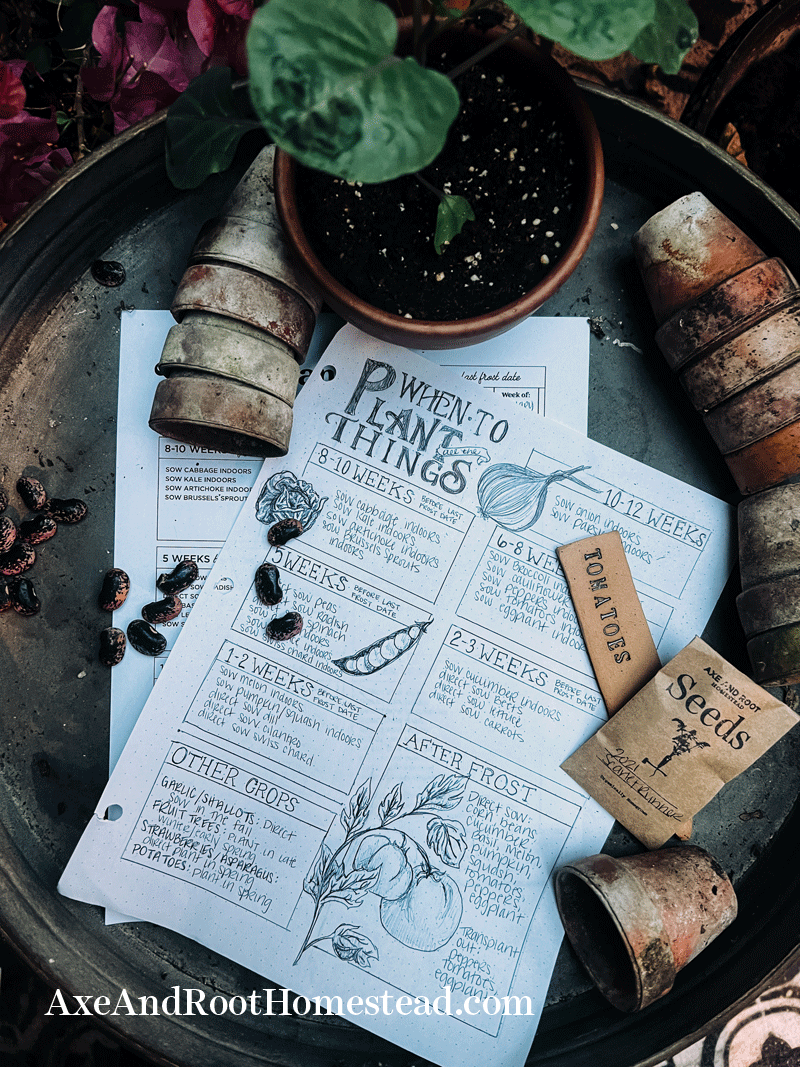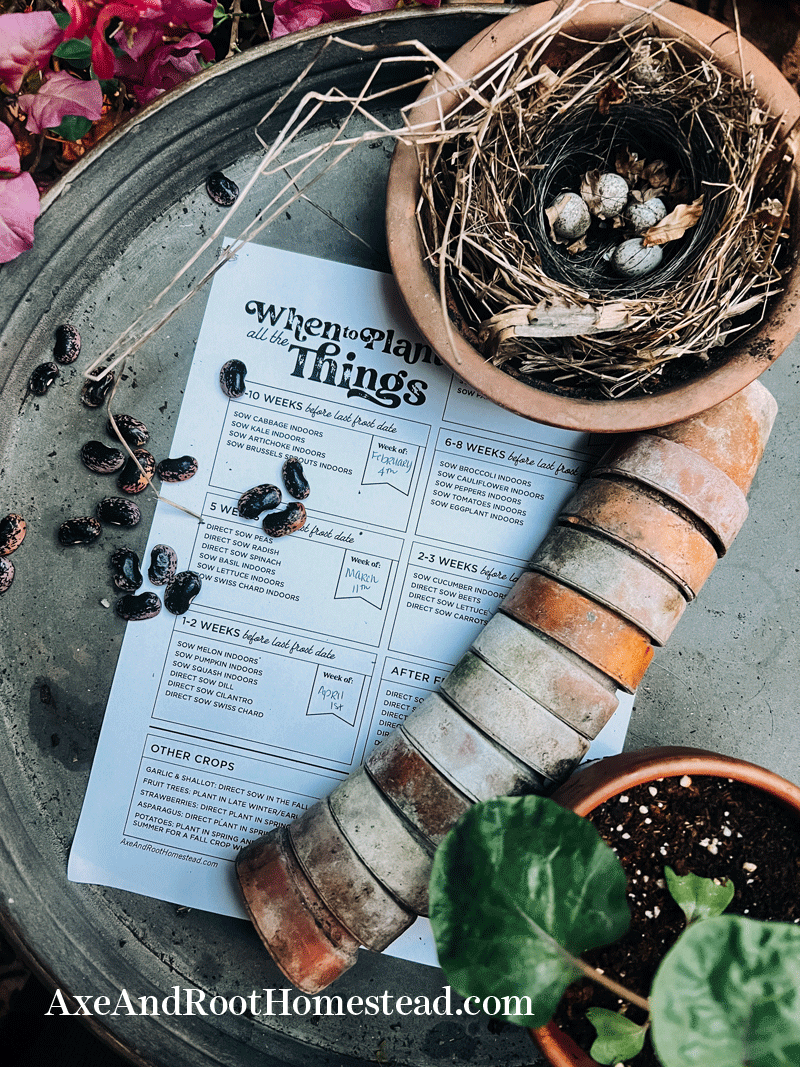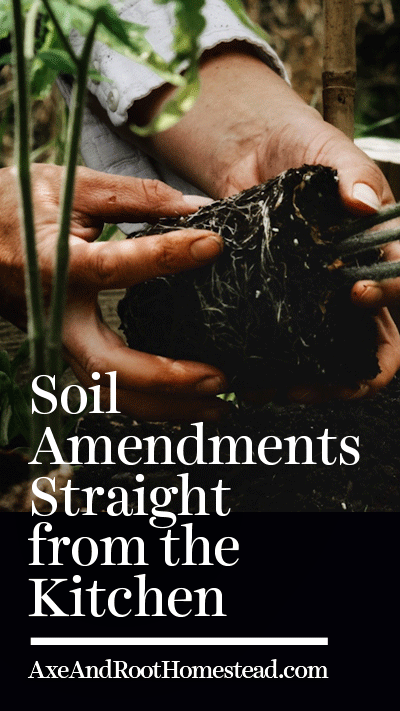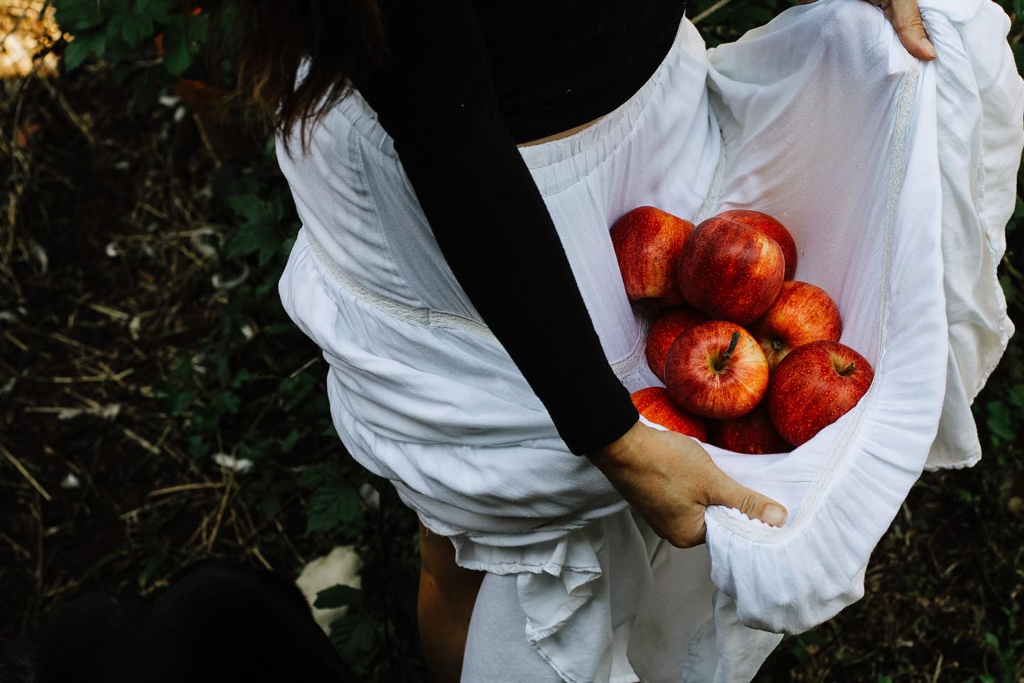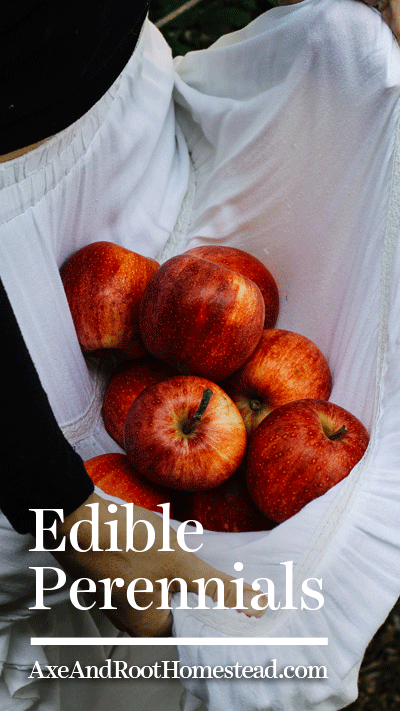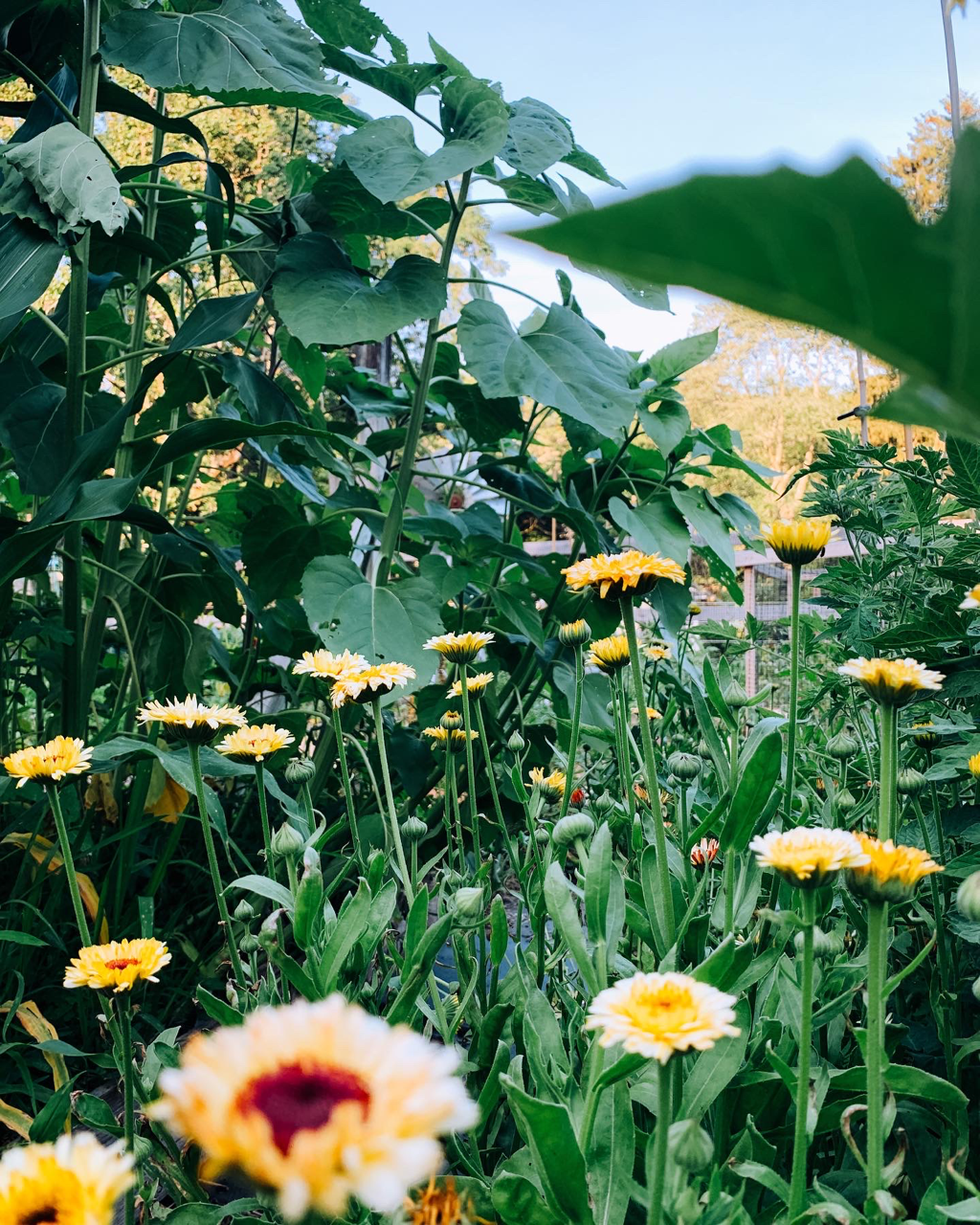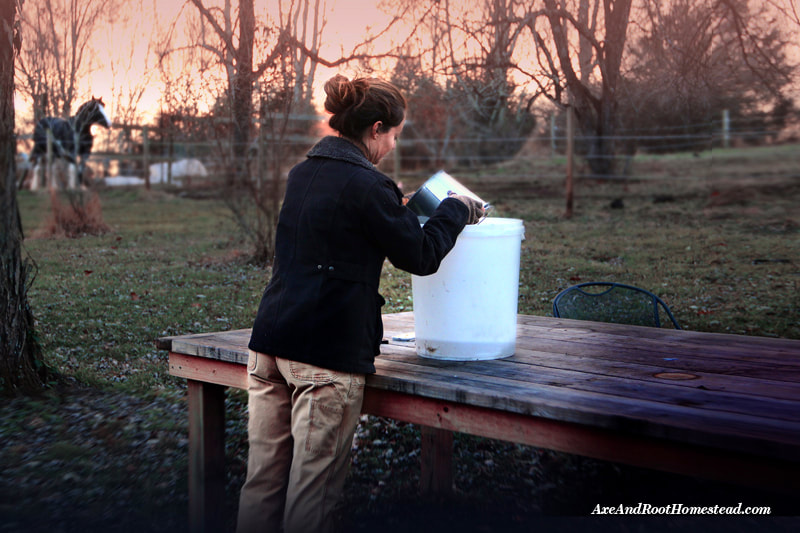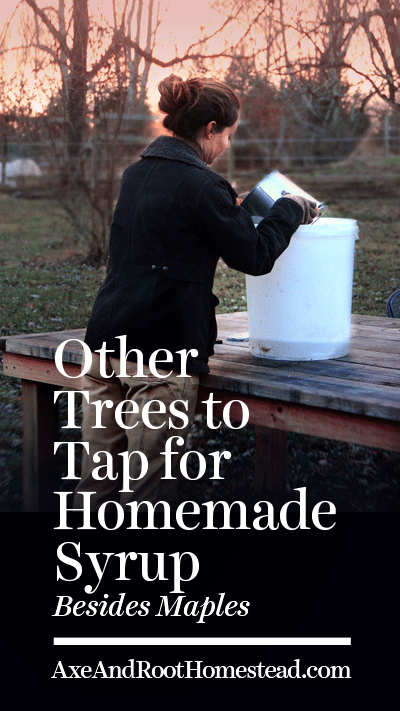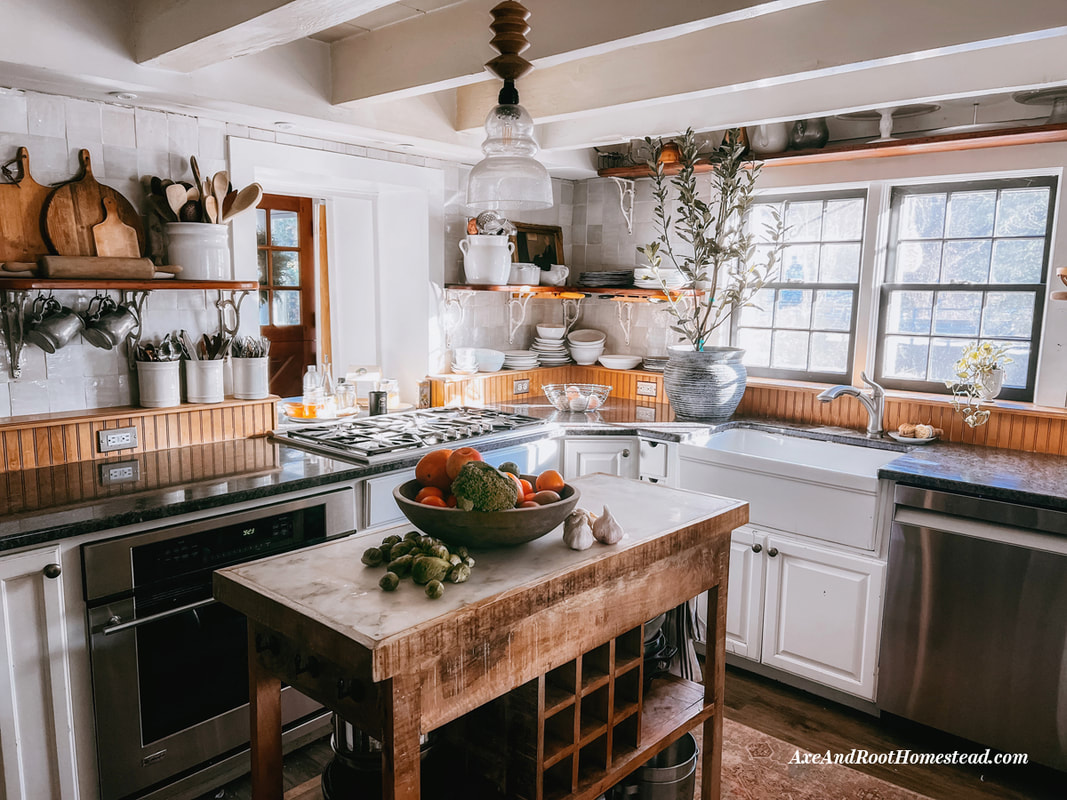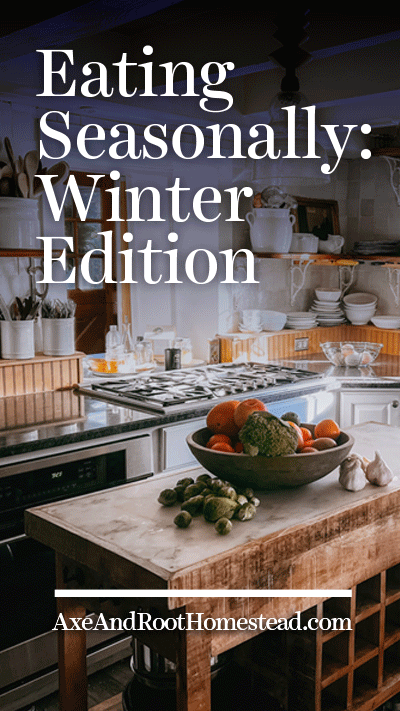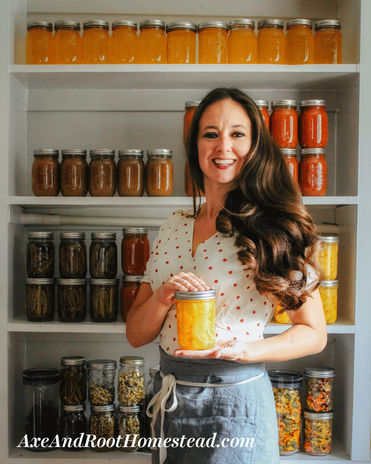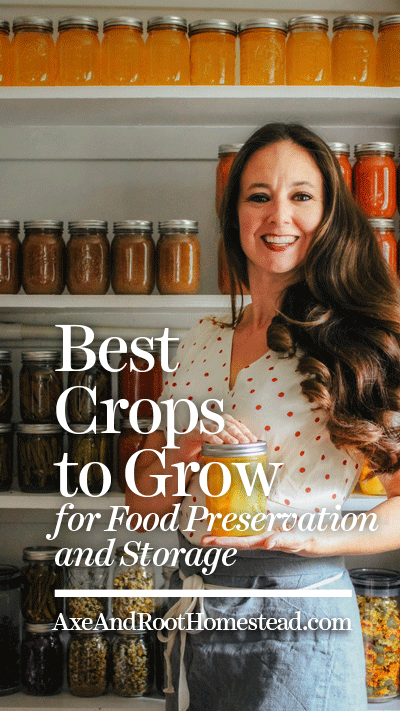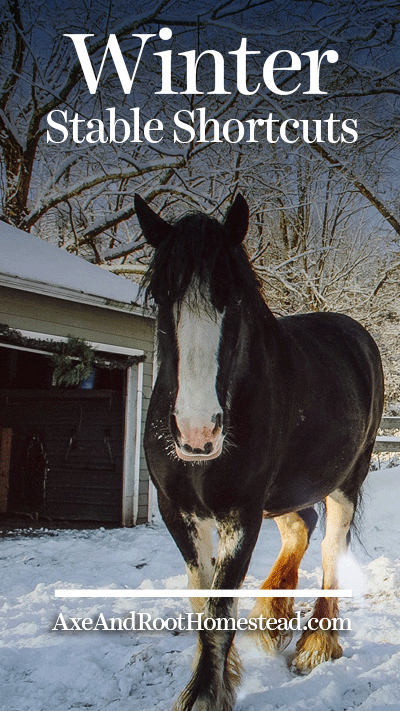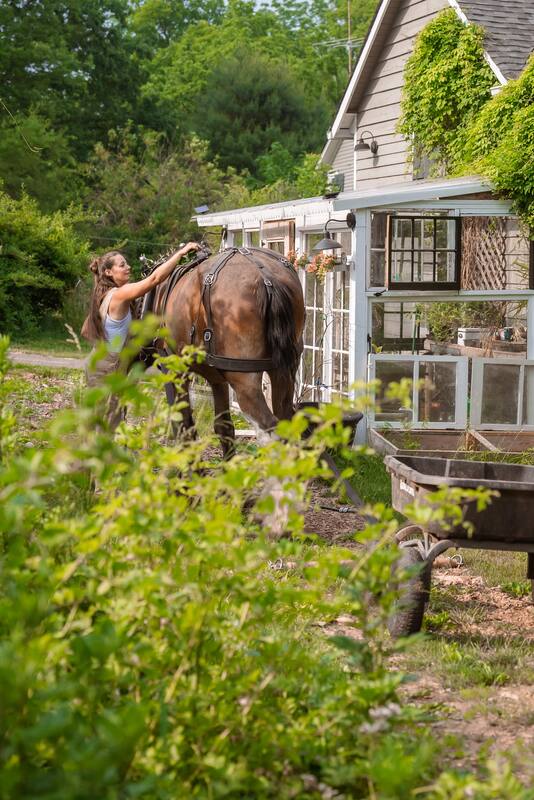|
I used my kids’ craft supplies and a few toy trees to illustrate a permaculture planting method. Creating sustainable systems like this combine perennials and annuals to create space for beneficial insects, birds, and wildlife to live. We can hold water and retain moisture. We can reduce pest pressure this way while maximizing our real estate for harvests. Grow up, not out.
In this demonstration, I start by showing a conventionally planted plot of strawberries. But how can we maximize this space to increase yields, retain water and relieve pressure from pests naturally? We start by building swales or raised planting mounds from stones and other organic matter. From there we top off our mounds with soil. Next we create a water catchment system such as a fresh rainwater pond and start adding our overstory trees. In this case, I've chosen chestnuts. Next we plant midstory trees (smaller fruiting trees) and then introduce strawberries as our groundcover. Other understory crops that thrive with strawberries (such as asparagus, broccoli, cauliflower, cabbage, kale, lettuce, tomato, peppers and herbs) are interplanted. Bushes such as gooseberries, elderberries and canberries are wonderful choices too. By growing vertically and interplanting companion crops, we have created food forest. Come planting season, it can be hard to keep track of when to start which crops indoors, when to sow others directly into the garden, and when it's safe to transplant those freshly hardened off crops to their permanent new homes. I have found that organizing crops into a list categorized by their relevance to the last date of frost is a big help. This way, I know exactly what needs to be done each week leading up to the warmer months. I created a download of this journal page from my own gardening notebook. But I understand my style (and handwriting) might not work for some. So I've also created a companion to this sheet which is a simplified, fill-in-the-blank worksheet for your use also. To use this download, you will need to know the last date of frost in your location. You can use the USDA's Plant Hardiness Zone Map to find your date here. From there simply fill in the blanks for the date of each week. Also included are common crops that don't require seed starting but rather transplanting. Guidelines for planting/transplanting fruit trees, strawberries, asparagus and more is also included.
This guide is a free downloadable PDF of two sheets. No physical item will be mailed to you. And it's completely free. Happy planting! Download here. Most of us will be prepping our soil for spring planting soon. There are lots of ways to improve soil quality and health other than just using compost and conventional fertilizers. Here's a list of items you may already have around your home.
Coffee Grounds
Epsom salt
Egg shells
Leftover Wine or Beer
Banana peels
Coconut Water
White Vinegar
Blackstrap Molasses
Sourdough Starter
Imagine planting a seed once and being able to harvest food from that plant for years. Wouldn't that be nice? We often think about gardening in terms of annuals; corn, tomatoes, peppers, etc. Things we plant once, harvest and then have to plant again. But when thinking about permaculture and holistic homesteading, it's pivotal to start thinking in terms of perennials; plants that return year after year. Here's the perks:
- Less work - Better for the soil as nutrients are pulled deeper and larger root systems loosen the earth - Better for the environment as more carbon dioxide is absorbed and held within woody plant matter - Better for natural insect control as birds and other predators of "bad bugs" have a permanent place to build their homes Instead of thinking short term, I had to retrain my brain to think of growing food as long term. Here's a short list of common plants we consume in North America. These will all come back EVERY. SINGLE. YEAR. Will you be incorporating any of these into your growing spaces this season? Almonds Apples Apricots Artichokes Asparagus Blackberries Blueberries Cherries Chestnuts Chives Collard Greens Cranberries Elderberries Grapes Grapefruit Goji Berries Gooseberries Hazlenuts Horseradish Jerusalem Artichokes Kale Kiwi Lemons Lemonbalm Lemongrass Limes Loganberries Lovage Mango Mint Mulberries Nectarines Olives Oranges Oregano Peaches Pears Pecans Persimmon Pomegranate Plum Quince Radicchio Ramps (Wild Leeks) Raspberries Rhubarb Sage Sorrel Strawberries Thyme Walnuts Wine Berries This list does not include self seeding crops we may think of that come back every year such as chamomile, arugula, etc. Are you familiar with companion planting? It's one of the foundations of creating working ecosystems when it comes to permaculture. We can group plants together when planning and planting our growing spaces to help crops deter pests/disease, mine nutrients from the soil, and attract pollinators. The result is a higher crop yield, less human intervention by way of fertilizing and pest control, and maximizing garden space.
These concepts can be applied to small spaces--even container gardens--to large environments like orchards. It's about getting away from mono-culture (planting rows upon rows of corn for example) and planting many things together, called poly-culture. You can find my companion plant systems for my fruiting trees in my highlights on Instagram. These are called Guilds and Guilds 2. But for containers, raised beds or in-ground garden systems, here's some helpful companion plant combinations I use. Tomatoes Plant lettuce, carrots, radish underneath and around Broccoli/Cauliflower Plant broccoli and cauliflower between rows of garlic and/or sage to deter cabbage moths. Crimson clover acts a great living mulch to attract predatory insects to feed on those cabbage moth larvae also. Cucumbers Surround with radishes to deter cucumber beetles Pumpkins/Squash Sow 2-3 nasturtium seeds around each seedling after sprouting to deter squash bugs/borers Marigolds and Calendula Use around borders to attract beneficial pollinators and deter rabbits Roses Interplant garlic around roses to deter fungal diseases (some folks say it also encourages a stronger fragrance from the rose blossoms!) Peas Peas give nitrogen to the soil so are great for heavy-feeding plants like tomatoes, corn, peppers, eggplant, and even potatoes Strawberries Interplant with mint to deter pests. Also interplant with borage to attract pollinators and enhance berry sweetness. There are LOADS of studied and proven plant relationships out there. You can find tons of information online, in books and in science journal articles. Did you know that you can tap many different varieties of trees for sap? This sap can be boiled down into homemade syrup. Maple and birch trees are most common, but there are many other sources for syrup making. The sap from each tree contains different amounts of sugar and water which means we need more sap to make syrup from some trees than we do from others. The taste will also vary. Sap flows at different temperatures for different trees as well.
🍁MAPLE (Sugar, Silver, Black, Red, Norway, Big Leaf) 40 parts of sap yields 1 part of finished syrup // Tap when daytime temperatures are above 32F (0C) and nighttime temperatures are below 🍂BIRCH (European White, Paper, Yellow, Black, Gray, River) - 110 parts of sap yields 1 part of finished syrup // Tap when daytime temperatures are 40-50F (4.4-10C) 🌳BOX ELDER 60 parts of sap yields 1 part of finished syrup // Tap when daytime temperatures are above 32F (0C) and nighttime temperatures are below 🌰BLACK & ENGLISH WALNUT 60 parts of sap yields 1 part of finished syrup // Tap when daytime temperatures are above 32F (0C) and nighttime temperatures are below 🍃BUTTERNUT 60 parts of sap yields 1 part of finished syrup // Tap when daytime temperatures are above 32F (0C) and nighttime temperatures are below 🌳SYCAMORE 40 parts of sap yields 1 part of finished syrup // Tap when daytime temperatures are above 32F (0C) and nighttime temperatures are below 🌴PALM 88 parts of sap yields 11 parts finished syrup // Can be tapped year round 🍃GOROSOE 40 parts of sap yields 1 part of finished syrup // Tap when daytime temperatures are above 32F (0C) and nighttime temperatures are below Other edible tappable tree varieties include: Linden/Basswood Ironwood Alder 🌲Pine trees can be tapped, however, their sap is very resinous and used for resin and turpentine. We hear about “eating seasonally” all the time but what does that really mean? So many of us have had the luxury of relying on grocery stores for our food that we have no idea about what crops are native to specific times of the year (greenhouse and large-scale industrial grow houses aside)… at least I didn’t before I started gardening and homesteading.
Why eat seasonally? Fresh, seasonal food is loaded with more nutrients per bite (and tastes better too). Plus our bodies require more or less of different nutrients by season which those seasonally available produce items helps to fulfill. Out of season strawberries, for example, have to be harvested before their prime—or before they even ripen, for that matter!—to be shipped and distributed elsewhere. They lack the flavor and nutritional content of in-season, local strawberries. Do I buy avocados at the grocery store? Yes I do. Do my children like to include bananas in their homemade lunches? Yep. Neither of which are local nor in-season to me. But the majority of the fruit and veg in my diet comes from homegrown, freshly harvested, frozen, canned or stored homegrown produce. It’s about setting realistic goals rather than giving into the criticism of nay-sayers and not trying at all. So with that, here’s an abbreviated list of common items in season NOW. 👉🏼If you’re interested in looking up your area specifically, there’s a great resource called SeasonalFoodGuide.org. Simply plug in your state and it’ll tell you what’s available for any given month of the year. ❄️WINTER❄️ Apples Beets Broccoli Cauliflower Celery Brussels Sprouts Cabbage Carrots Grapefruit Kale Leafy Greens Lemons Limes Oranges Potatoes Swiss Chard Turnips Radishes Winter squash (butternut, spaghetti, etc) Think canning belongs in the 1950s? Think again! So much of what I grow is selected and planned around preservation. I want food security and freedom from grocery stores. About 75% of what I grow has been researched for the ability to store. The rest is for fresh eating. When COVID started, we didn’t set foot in a grocery store for 3 months. That was for dry goods like flour—and toilet paper ;).
For anyone interested, here’s my list of crops I’ve put together over time for shelf longevity, freezer quality and canning... I hope it’s helpful! Yellow Onions Bridger, Copra, Cortland, Patterson, Pontiac, Talon, Yellow Globe (includes heirloom and hybrids), Yellow Sweet Spanish White Onions Southport White Globe, Stuttgarter, White Sweet Spanish Red Onions Brunswick (heirloom), Red Bull, Red Creole (heirloom), Red Wind Potatoes Elba, Katahdin, Red Chieftain, Yukon Gold, Burbank Russet, German Butterball, Yukon Gem, Rose Finn Apple Fingerling, Russian Banana Fingerling, Red Pontiac, All Blue, Kennebec Garlic (Softneck best for storage) Inchelium Red, California Softneck, California Early, Italian Loiacono, Silver White Sweet Potato Beauregard Carrots Nantes, Chantenay, Imperator, Danvers Beets Cylindra, Flat of Egypt, Pacemaker III, Pablo, Boro Shallots Dutch varieties (chicken leg and Dutch yellow) Paste Tomatoes San Marazano, Amish Paste, Roma, Big Mama, Golden Mama Cherry (Paste and Preservation) Sungold, Super sweet 100, Yellow pear Slicing (Paste and Preservation) Black Krim, Rutgers, Mar globe, Ace 55 Peaches Free stone varieties Apples (whole storage) Granny Smith, Red delicious, Golden delicious, Gala, Empire, Winesap, Fuji Apples (canning) McIntosh, Cortland, Fuji, Braeburn, Jonagold, Granny Smith, Golden Delicious, Pink Lady, Jazz, Honeycrisp Canning Beans Bush varieties: Black Turtle, Goldmine, Blue lake 274, Topcrop, Tendercrop, Contender, Provider, Strike, Improved Tendergreen, Refugee and Stringless Green Pod. Pole beans: Blue Lake FM-1, Kentucky Wonder Squash (whole storage) Spaghetti, Waltham Butternut, Anna Swartz Hubbard, Golden Hubbard, Sibley, Musquee de Provence, Chioggia, Queensland Blue, Dutch Crookneck, Australian Butter Livestock guardian dogs and other working dogs can develop dry, cracked paw pads and accumulate snow clumps in the wintertime. To keep my pups on the homestead comfortable in the snow, I make my own Buddy Balm. Here’s my recipe:
Buddy Balm Recipe 2oz dried beeswax, melted 2oz olive oil 2oz coconut oil, melted 1 drop vitamin E oil Combine all liquified ingredients in a heat safe container and stir well to combine. Pour into a storage jar with a lid. Use the cooled balm by rubbing just a bit onto each paw. The pads are instantly moisturized and will stay snow free! Safe for outdoor cats too. P.S. This is great for human skin too! The water had frozen in the 100-gallon outdoor stock tank nightly for weeks, despite a heater. I was complaining about cracking and removing the ice to Annette at Azure Farm and she said, "Just do the water bottle trick." What water bottle trick?! This was the catalyst for my finding winter short cuts in the stable.
Water Bottle Floats Fill a plastic water bottle with 1/4 cup salt. Fill the rest of the way with water. Reapply the cap, seal and shake. Place the water bottle (I do 2-3 for a 100-gallon stock tank) in the water trough. They will float and bob slightly, offering just enough movement to slow freezing. Dry Shampoo My horses get itchy as winter progresses but I won't bathe them until we're above 65 degrees Fahrenheit. I started using Dry Shampoo for horses by @equiderma. It's natural and smells so good. Just work down to the skin with a curry comb! Insulate Water Buckets with a Second Bucket Water buckets can freeze in stalls easy, but heaters are a big no-no indoors. Instead, place a smaller bucket within a larger bucket and fill the gaps between with hay or straw (think a 2-gallon inside a 5-gallon). Works like a charm. The Stable Crockpot Sometimes water is required in the stable during the winter for grooming--especially when it comes to helping horses with mud fever. A crockpot kept on warm can be filled with water to have on-hand as needed. Just be sure to test the temperature on your own skin before applying to your horse. Slicken a Manure Fork Frozen manure sucks to clean up when the tongs won't go through. I usually switch to a pitchfork because those plastic forks don't work so well. Unless you slicken it with horse detangler! A quick spray on the fork will help it slide through and clean up the yuck. Cloth Hoses I am fortunate to have water spigots that extend well below the frost line. Getting water from the spigot down the hill up to the stable, is a different challenge. I got sick of freezing hoses so I purchased cloth hoses. After use, simply unplug the hoses and allow them to drain. After a few minutes, I roll them up and toss into a 5-gallon bucket and bring them indoors. The next time I need to fill a trough, the hoses are thawed. I hope these tips are helpful! |
Angela is the farmer and content creator behind Axe & Root Homestead® LLC. This historic six-acre permaculture farm is home to two Clydesdale horses, ten honeybee hives, five sheep, two guardian dogs, barn cats and a flock of 40 geese and ducks. The farm produces maple syrup, fruit from a small orchard and loads of garden produce for consumption, preservation and donation to the local food pantry.
The Sustainable Homestead is available NOW!
Categories
All
|

